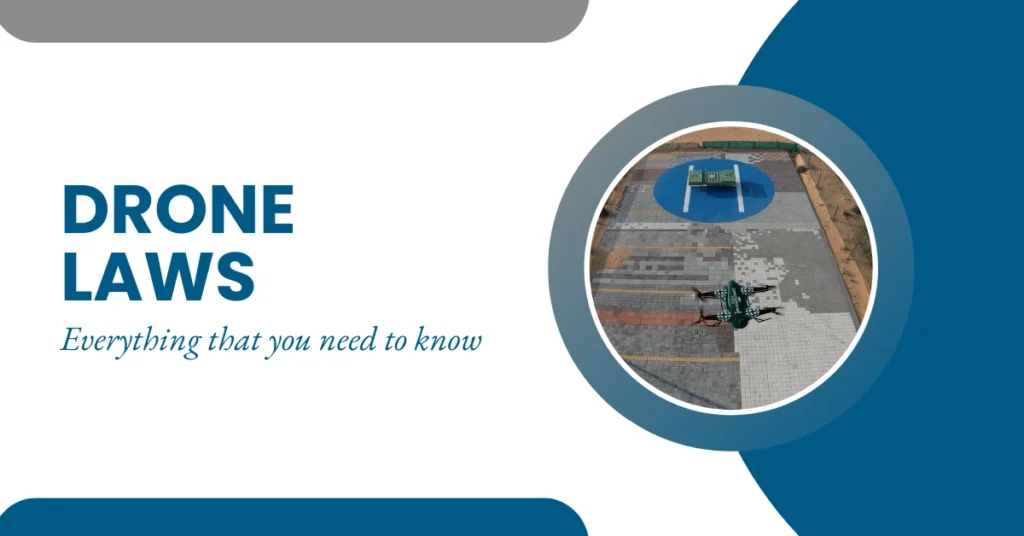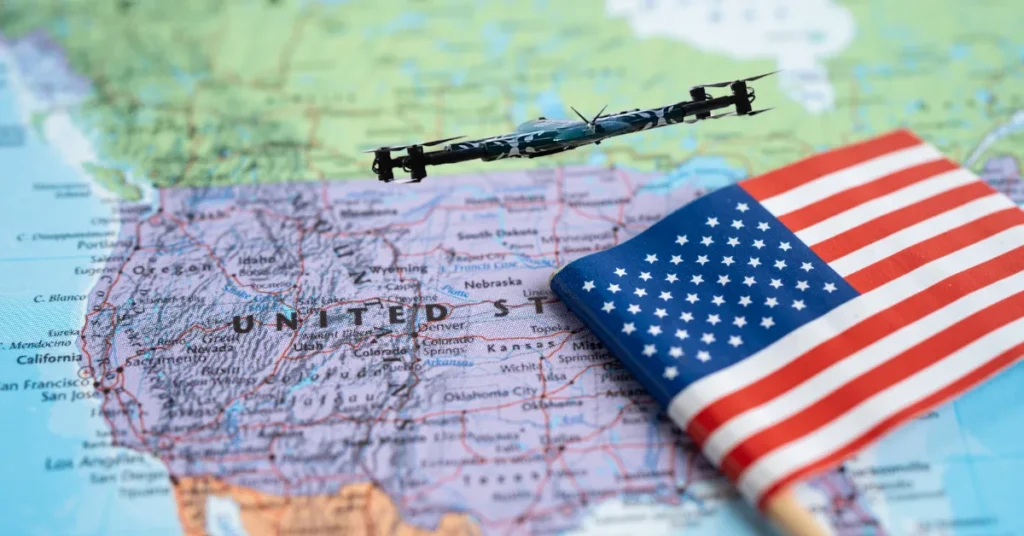
Laws controlling drone use have changed along with developments in drone technologies. New drone laws aiming at guaranteeing safety, security, and privacy in 2025 also support responsible drone operations. Whether your drone is flying commercial or recreational, knowing these drone regulations will help you stay out of legal hotbeds.
This blog will cover everything you need to know about the rules for flying drones in 2025, including registration requirements, operational guidelines, commercial licensing, and international developments.
Universal Guidelines for Drone Pilots
Whatever your reason for flying a drone recreation or business some basic rules for flying drones apply to all drone operators:
1. Drone Registration Rules
- Weight: Drones weighing more than 0.55 pounds (250 grams) have to be registered with the Federal Aviation Authority (FAA) using the FAADroneZone.
- Fees: Each drone should be registered for $5, which is good for three years.
- Labels: The drone has to show the registration number.
- Remote ID Requirements: All drones must follow FAA Remote ID regulations by 2025, which means they must broadcast location information and identification to raise airspace security.
2. Limitations on Altitude
- Drones cannot fly above 400 feet to prevent interfering with manned aircraft
- There are few exceptions for commercial activities with particular permission
- Drone pilots have to be aware of altitude restrictions in controlled airspace and, should needed, apply for permission
3. Airspace Awareness
- Operators have to avoid limited areas, including:
- Airways
- Military headquarters
- Parks of Nationality
- Pilots may find no-fly zones using the FAA’s B4UFLY tool
- During special events, crises, or VIP movements—where temporary flight restrictions (TFRs) may be in effect pilots must check NOTAMs (Notices to Airmen)
4. Visual Line of Sight Requirement
- Pilots have to always keep a direct line of sight with their drone
- Night operations call for drones with suitable illumination
- Only when a visual observer is present is FPV, First-Person View, flying permitted
Laws for Recreational Drone Pilots

Should you be using a drone for personal or recreational purposes, you have to abide by these rules for flying drones:
1. Requirements for Safety Tests
- To prove a basic understanding of drone regulations, recreational pilots must pass The Recreational UAS Safety Test (TRUST).
- The test is free and offered online via FAA-approved companies
2. Operational Directions
- Flights should be:
- Carried below 400 feet
- Kept under visual line of sight
- Far from sensitive infrastructure, other aircraft and people
- Recreational rules prohibit any commercial use
- Lying over big events or gatherings without authorization is strictly forbidden
Guideline for Commercial Drone Pilots
Whether for photography, surveilling, or deliveries, if you operate drones for business, you have to follow FAA Part 107 rules:
1. Remote Pilot Certification
- Pilots who want to fly a drone for business have to pass the FAA’s Part 107 Aeronautical Knowledge Test and earn a Remote Pilot Certificate
- Pilots have to renew their certification by an online recurrent test every two years
2. Part 107 Compliance
Daylight Operations: Most flights have to happen under appropriate lighting during daylight or twilight.
Weight Limit: Registered drones must weigh less than 55 pounds unless specifically waived.
Restrictions on Operations:
- Cannot fly over people without a waiver
- Has to give manned aircraft right-of-way
- Operations at night call for anti-collision lighting
- Wavers Beyond Visual Line of Sight (BVLOS): Needed for businesses like delivery services or extensive inspections that want to run drones across great distances.
Local Government and State Drone Regulations

Although federal drone laws apply all around, some states and cities have relative drone regulations. These are a few noteworthy rules:
1. Florida
- Operations of drones over important infrastructure is forbidden
- Weaponized drones are forbidden
- Surveillance with drones cannot be done without permission
- Local governments could impose extra limitations in sensitive areas
2. California
Some cities ban drone operations close to:
- Special events
- Operations in emergency response
- Private residences without authorization
- California Privacy Regulations: Drone flying for surveillance or recording without permission might result in fines and legal action, depending on the intent
Before flying, drone operators should always review local legislation since some states have tougher fines for violations.
Recent Legislative Developments
1. National Defense Authorization Act (NDAA) 2025
Approved in December 2024, this legislation contains clauses pertaining to drone operations concerning national security and drones manufactured abroad. Because of security concerns, the law forbids government agencies from buying drones produced by foreign manufacturers.
2. Drone Act of 2025
Suggested in February 2025, this bipartisan law aims to provide federal grants for local law enforcement to use drones, enhance public safety campaigns, improve airspace and drone traffic coordination, and enforce stricter penalties for illegal drone operations near critical infrastructure.
International Drone Laws and Security Measures
Rising security issues are driving countries to change their drone regulations. Two noteworthy examples here are Romania and Germany:
Romania
Romania passed legislation allowing its military to neutralize drones entering its territory in response to constant illegal drone incursions. Civilian drone pilots must register their drones and get flight authorization for some regions.
Germany
Germany approved military action to down illegal drones close to important infrastructure in response to possible espionage threats. Nowadays, commercial drone operations call for more strict adherence to privacy and data protection laws.
Future Developments in Drone Regulation
As drone laws evolve, rules for flying drones will likely become more sophisticated, including:
- More solid cybersecurity rules help to stop illegal control and drone hacking.
- Automated systems designed to manage drone traffic in cities run under artificial intelligence.
- More drone rules tailored to fit growing drone delivery companies will assist in sustaining these services.
- Governments will probably impose more fines and jail time for operators violating laws and harsher penalties for reckless drone operations.
Bottom Line
Safe and legal operations depend on keeping oneself informed about drone laws as drone usage grows. Following federal, state, and local drone rules guarantees responsible drone use and helps preserve safety in the national airspace, whether for commercial or personal interests.
Knowing the most recent drone regulations for 2025 will help you fly with confidence, avoid paying legal fines, and maximize your drone experience. Before flying, ensure compliance is followed and research for updates on drone laws.
See the FAA’s official website at faa.gov or speak with a legal expert specializing in drone rules if you have questions regarding drone regulations or licenses.
